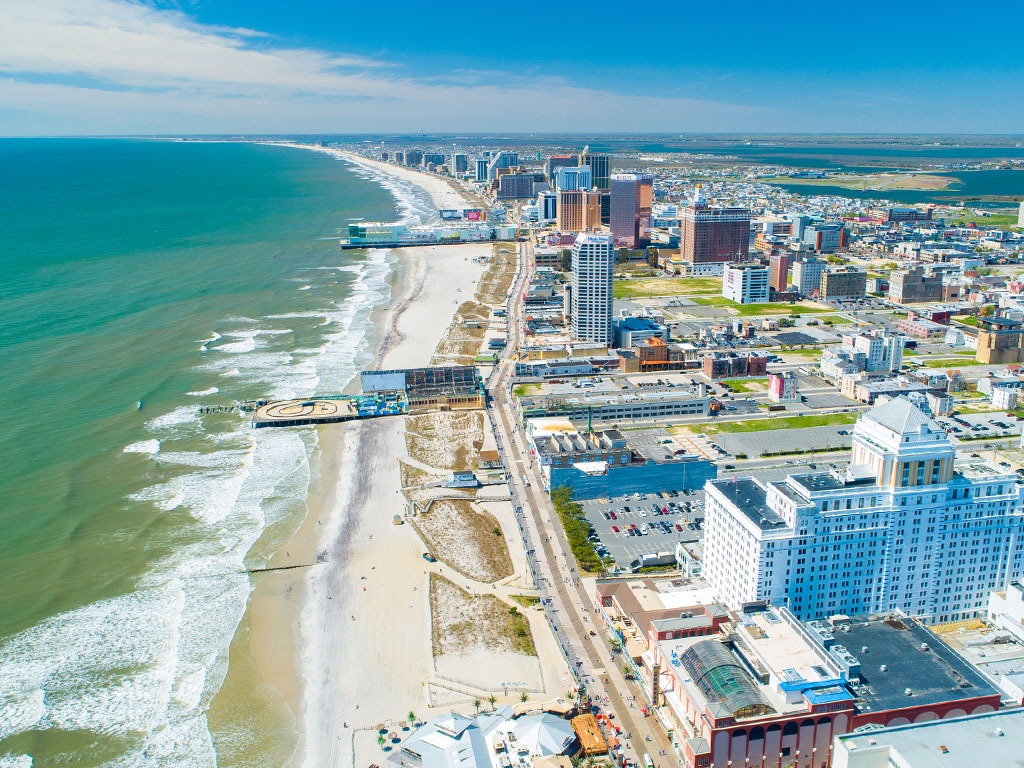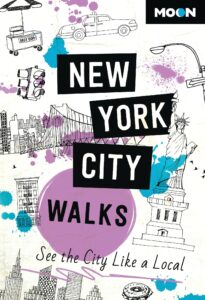The New Jersey Shore and Atlantic City
The Jersey Shore
The northernmost stretches of the New Jersey shore are not exactly appealing, and visitors bound for the beaches and vacation spots farther south generally turn a blind eye to the industrial blight of Bayonne, Elizabeth, and Perth Amboy, but once you round Staten Island and hit the Atlantic shoreline, the sights get better and better. Mixed in among gritty blue-collar summer resorts like Bruce Springsteen’s Asbury Park and Seaside Heights, birthplace of MTV’s Jersey Shore, there are intriguing Victorian-era resorts like Spring Lake and Avon-by-the-Sea.
The middle stretch of the Jersey shore is actually the quietest, with the million-acre (404,686-ha) Pinelands National Reserve (609/894-7300, daily, free) covering the inland area with forest and wetlands, and the coastal Long Beach Island dotted with sleepy little fishing and retirement communities. The biggest sight hereabouts is at the northern tip of the island: Barnegat Lighthouse (609/494-2016, daily summer, $3 adults), “Old Barney,” whose image appears on personalized New Jersey license plates.
Atlantic City

Atlantic City reached its peak at the turn of the 20th century, when thousands of city-dwellers flocked here from New York and Philadelphia each weekend. Later on, as automobiles and airplanes brought better beaches and more exotic locales within reach, Atlantic City went into a half century of decline until gambling was legalized in the late 1970s, and millions of dollars began to flow into the local economy from tax subsidies for speculating real-estate developers like president Donald Trump, whose name used to be emblazoned on a number of towering resort hotels. These days, the Boardwalk of Atlantic City still attracts millions of annual visitors and millions of dollars daily to its casinos. It’s no Monte Carlo, not even a Las Vegas, but the clattering of slot machines and the buzz of the craps tables continues. The Boardwalk runs along the beach for 4 mi (6.4 km). Few of the remaining pleasure piers offer much of interest, and only the rebuilt Steel Pier holds any sign of the traditional seaside rides and arcade games that people used to come to the shore to enjoy.
Besides constituting Atlantic City’s main attractions, the casinos hold most of the places to eat, apart from the dozens of fast-food stands along the Boardwalk. That said, a couple of old favorites stand out from the seedy crowd of ramshackle businesses that fill the nearby streets. One is the birthplace of the submarine sandwich, the chrome White House Sub Shop (2301 Arctic Ave., 609/345-8599). A block away, but at the other end of the aesthetic and budgetary spectrum, is Dock’s Oyster House (2405 Atlantic Ave., 609/345-0092), a white-linen happy-hour and dinner-only restaurant that’s been serving great seafood since 1897. Along with a number of national chains, the casinos also control accommodations—expect to pay upward of $100, though off-peak bargains can be found.
Margate: Lucy the Elephant
Immediately south of Atlantic City, tidy Margate (pop. 6,083) fans out along the shore, its solidly suburban streets lined by grand houses. Margate utterly lacks the reckless seaside qualities of its larger neighbor but does include one classic remnant of the Jersey shore’s glory days: Lucy the Elephant (9200 Atlantic Ave., 609/823-6473, daily summer, limited hours fall-spring, $8.50 guided tour). The six-story wood-and-tin pachyderm, a curiosity built by a Philadelphia real-estate speculator in the 1880s to draw customers to his newly laid-out community, looms over the beach. A National Historic Landmark, the architectural folly was once used around the turn of the 20th century as a tavern. It now holds a collection of old photographs and other memorabilia, including some of the original pieces of Lucy. Visitors walk through the museum on the way up to an observation deck, which is disguised as a canopied seat on Lucy’s back.
Saved from demolition and restored by community efforts in the 1970s, Lucy is ever in need of repair, kept alive by tour monies, donations, and sales of Lucy souvenirs in the small gift shop.
Related Travel Guides
Atlantic Coast Travel Map

















